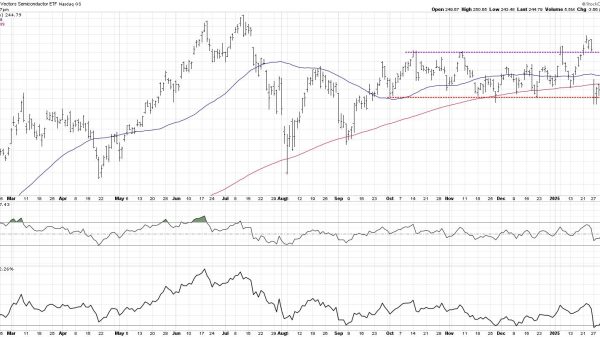Jeffrey A. Singer and Bautista Vivanco

As promised, the White House released the recommendations of the MAHA Commission—the “Make Our Children Healthy Again Strategy Report”—on September 9 as part of the Make America Healthy Again (MAHA) initiative. The report does not add to the pre-made conclusions and unsupported or poorly sourced claims found in the Commission’s MAHA Report last May. This new document is mostly aspirational, outlining a list of research and policy priorities for the near future.
Research Priorities vs. Government Influence
No one can argue with some of the questions the report recommends for research. Exploring the multifactorial causes behind the rise in autism diagnoses, environmental factors that may influence childhood development and health, gut microbiome research, mental health and addiction research, and understanding how certain foods and the chemicals used in growing, processing, and preserving them are healthy or unhealthy are all important topics to investigate.
Expanding and enhancing the integration of health data collection is also a valuable suggestion.
However, as we pointed out in our critique of the MAHA Report last May, government-funded research can corrupt science. Researchers are less likely to get funding if their work challenges or does not support the prevailing narrative or desired conclusions of the government sponsor. President Dwight Eisenhower’s warning in his farewell address is worth repeating: we must “be alert to the equal and opposite danger that public policy could itself become the captive of a scientific-technological elite.”
It’s important to remember that one of the biggest health scandals of the post-war era was completely created by the government itself, specifically the Food Pyramid. This pyramid can actually be quite helpful if it’s turned upside down and people do the exact opposite of what it recommends.
Ambiguities and Mission Creep
As in the MAHA Report release last May, the authors’ biases and preconceived conclusions can be self-contradictory.
For example, on page eight of the report, the authors rightly highlight the lack of a consistent definition and understanding of what qualifies as “ultra-processed” foods. As one of its priorities, it promises the “USDA, HHS, and FDA will continue efforts to develop a U.S. government-wide definition for ‘Ultra-processed Food’ to support potential future research and policy activity.”
Yet on page two, the report states, “Over 60% of children’s calories now come from highly processed foods.” How do the members of the commission know this if they have not yet established a government-wide definition for ultra-processed foods?
Some proposals in the report are ambiguous, generating uncertainty and sparking concern over their impact on personal liberty and autonomy.
Page six of the strategy report calls for prioritizing research into “precision agricultural technology.”
But the strategy report departs from the US Department of Agriculture’s broader understanding of precision agriculture, which it defines as “a management system that is information- and technology-based, site-specific, and uses data…for optimum profitability, sustainability, and protection of the environment.” The MAHA Commission, by contrast, frames precision agriculture mainly as a way to “decrease pesticide volumes and improve the soil microbiome,” presenting it as a public health tool.
Public health agencies have historically engaged in mission creep, expanding into personal health decisions (we discuss this more below). Now they’re getting “into the weeds”—quite literally—by directing how farmers manage their crops. That level of mission creep takes public health far afield. Government interventions, such as subsidies, can weaken the effectiveness of legitimate public health activities. And in this case, it isn’t even clear how “improving the soil microbiome” would make children healthier in the first place.
The report also proposes agricultural interventions. On page 8, it states: “USDA and HHS will work to develop research and policies to support domestic production of plants used as natural color sources.” The report never explains why domestic sources are preferable to foreign ones. America’s health has not suffered from importing natural red, white, and blue—and it won’t improve by growing them at home. And what expertise does the Department of Health and Human Services bring to agriculture or trade policy?
On page nine, the report declares another policy goal: “FDA will modernize nutrient requirements for [infant] formula.” If the Food and Drug Administration truly wants families to have access to better products, it should stop blocking foreign-made formula with onerous regulations. Greater competition and innovation in this market would benefit families. Otherwise, the threat of formula shortages will continue to hang over parents and their children.
The so-called “MAHA Boxes” are another unclear aspect of the MAHA strategy. These would be boxes of “whole, healthy food” delivered to Supplemental Nutrition Assistance Program (SNAP) participants—basically a government-run version of meal-kit services like Factor or HelloFresh. Notably, the report fails to explain how this approach would make welfare recipients healthier than other options. For example, allowing food stamp benefits to go toward home sanitation or other practical improvements might do far more for health than a box of peas and carrots.
A clear underlying theme in the strategy is the belief that individual consumers are either incompetent or unable to make their own health decisions. The report makes this almost explicit on page eight when it states that the FDA “will work toward development of a potential Front-of-Pack nutrition information final rule.” In other words, this administration believes that simply turning a box of cereal around to read its nutritional content is too difficult for Americans—and that more regulation is therefore necessary.
The report’s attacks on direct-to-consumer pharmaceutical ads further reveal its distrust of consumers. On page nine, it states that “FDA, HHS, the Federal Trade Commission (FTC), and Department of Justice will increase oversight and enforcement…for violations of direct-to-consumer (DTC) prescription drug advertising laws.” As one of us (Singer) recently wrote, this crackdown doesn’t just limit patients’ access to information—it likely violates the First Amendment.
Another problematic policy goal appears on page 11, where the report states that government agencies “…will fully implement the President’s executive order regarding hospital and insurer price transparency so that Americans are in control of managing their healthcare.” This approach is likely to fail — and could even backfire. Unless the government stops mandating and encouraging third-party payment models, Americans will never be in full control of their health care, no matter how much the president demands price transparency or lower costs.
Monopolies in Medical Education
The strategy report’s page 10 addresses the current monopoly on medical school accreditation. It proposes using the regulatory powers of the Department of HHS and the Centers for Medicare and Medicaid Services to promote competition among accreditation institutions and increase the diversity of accredited medical school curricula.
Ending the accreditation monopolies and creating competition among accreditors and in medical school curricula is a laudable goal. But much of the authority for doing so rests with state legislatures and the licensing boards they empower.
State licensing boards will only grant licenses to physicians graduating from medical schools accredited by the Liaison Committee on Medical Education (LCME)—created by the American Medical Association (AMA) and the Association of American Medical Colleges (AAMC)—for MDs, or the American Osteopathic Association Commission on Osteopathic College Accreditation (COCA) for DOs.
Before granting them a license, state licensing boards require graduates of medical schools outside the US to have graduated from a medical school that the Educational Commission for Foreign Medical Graduates (ECFMG) has certified. The AMA, AAMC, Federation of State Medical Boards, and the National Board of Medical Examiners (which administers the standardized National Medical Licensing Exam) established the ECFMG in 1956 as a nonprofit organization with a mission to “evaluate the readiness” of international medical graduates to enter graduate medical education programs (residencies and fellowships) in the United States.
State licensing boards also require graduates of accredited medical schools to complete at least one year of a postgraduate medical education, or residency, program. These boards grant the Accreditation Council on Graduate Medical Education (ACGME)—established in 1981 by the AMA, AAMC, American Hospital Association, and several specialty societies—a monopoly on accrediting residency programs.
To be sure, the federal government supports these monopolies. For example, medical student loans depend on the medical school being accredited by the LCME or COCA, and CMS provides funds to create residency positions in hospitals and medical centers, as long as the programs are ACGME-accredited.
As one of us (Singer) has argued here and in written testimony before the House Judiciary Committee Subcommittee on the Administrative State, real reform depends on state lawmakers taking action. Incumbents will lobby hard to preserve the status quo.
Finally, as Cato’s Andrew Gillen explains here, there are dangers inherent in government involvement in curriculum development and accreditation for higher education, including medical schools. By wielding funding and regulatory leverage, governments can impose their preferred vision and suppress innovation and a diversity of ideas.
Personal Health Should Not Be Public Policy
Pages 15 through 18 of the strategy report depart from giving public health advice and veer into the realm of personal health advice. It will ask the surgeon general to launch an education campaign to limit screen time for children and adolescents, for example. As we and our colleagues have written here,
Successive administrations have turned the Office of the Surgeon General into a highly political platform that opines on divisive non–public health issues ranging from gun control and social media to labor and housing policy. Such mission creep undermines the effectiveness of legitimate government public health activities.… Eliminating the surgeon general’s divisive political advocacy would be a step toward restoring trust in public health officials. Congress should dissolve the Office of the Surgeon General and the Commissioned Corps, eliminate their non–public health activities, and reassign any legitimate public health activities to other agencies.
Pages 15 through 18 list personal health areas the government has no legitimate right to regulate—adult vaping, physical fitness, dietary choices, and pain management—yet apparently plans to. These are personal, not public, health issues, and individuals should be free to address them with the health care professionals they choose.
As the book “Your Body, Your Health Care” states:
To British philosopher John Stuart Mill, only the affected individual is best qualified to judge whether a risk is worth taking because no other person cares more about that individual’s best interest. Even if patients make the wrong decisions, Mill maintained that society should regard them as if they are the experts about what is in their best interests because they have insights into their own priorities for well-being and happiness that no other person can have.
Empower Choice, Respect Evidence
The Make Our Children Healthy Again Strategy Report is full of ambition—but much of it rests on weak evidence and pre-made conclusions. It tells families what to eat, how to raise their kids, and even how to read a cereal box, assuming Americans cannot make basic health decisions for themselves. Real progress comes from trusting families, respecting solid science, and giving people access to information—not from turning personal choices into government mandates. As Mill wrote in On Liberty, “the individual is the proper guardian of his own health and interests.” Micromanaging meals, soil microbes, and cereal boxes won’t make children healthier—it just makes government bigger.






















